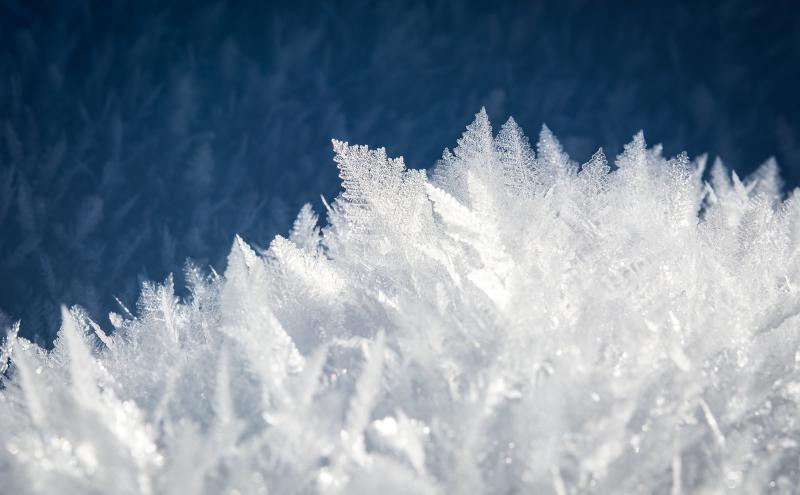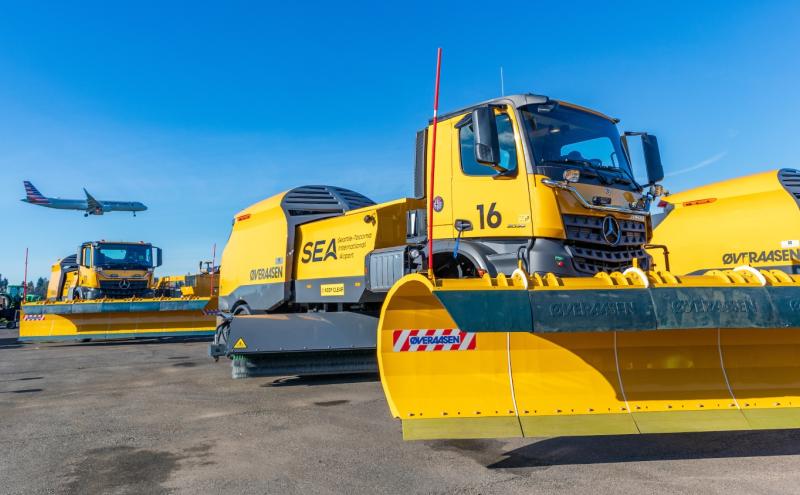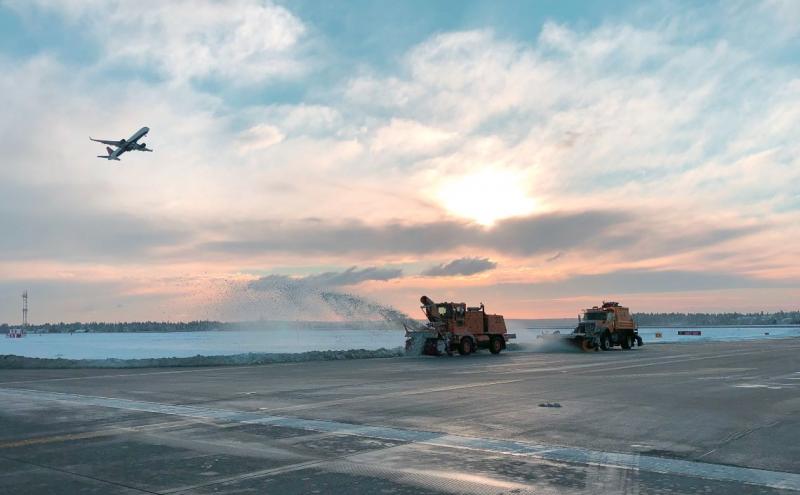
Originally published December 2019; updated January 2024.
The Big Dark is upon us and — although it comes every year — many of us breathe a collective Big Sigh. At Seattle-Tacoma International Airport (SEA) we’re ready for when the weather turns frightful! We’re putting on our puffer jackets, lacing up our winter boots, and pulling out our thermos to keep our hot cocoa steaming hot while we deal with winter.
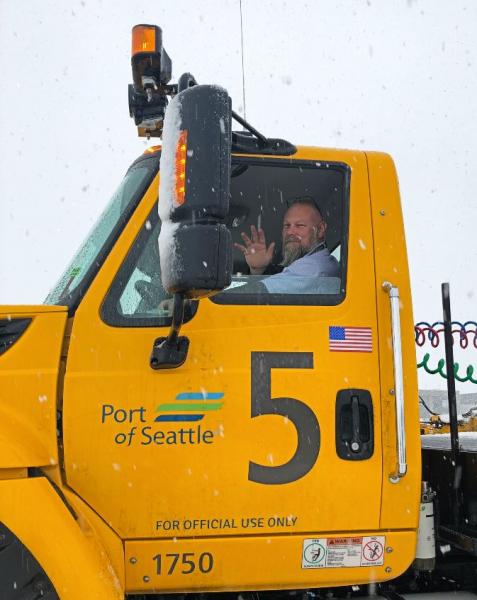
The truth is, we start to think about snow well before the first flake falls. Learn more about how SEA prepares for winter weather.
Fact 1: The biggest snow month at SEA was 1950
As much as 2019 felt like Snowmagedden with more than 20 inches of snow, it’s actually been much worse! Over the last 10 years, SEA Airport has averaged about 6 inches of snow annually. The biggest snow month in airport history was January 1950, with a whopping 57 inches of snow in one month. (That kind of makes us a feel a little better!)
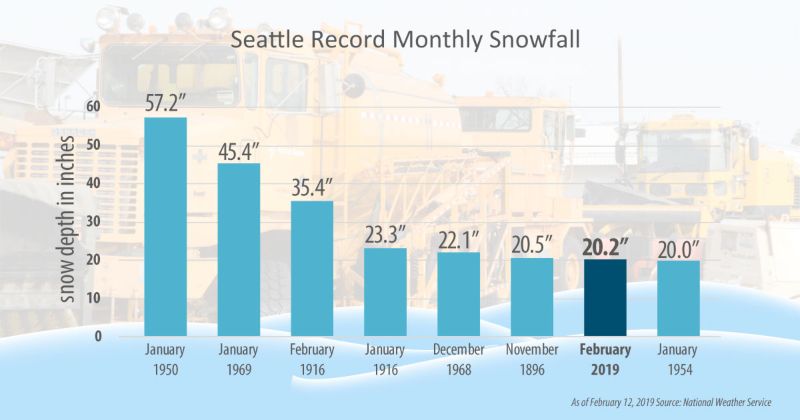
Fact 2: In 2019, the airport was swimming in snow
During the historic snowstorm in February 2019, the SEA snow team removed three million cubic yards of snow from airport ramps and runways. That’s enough snow to fill 48 Olympic-sized swimming pools! Throughout that dump SEA Airport remained open with some flight delays.
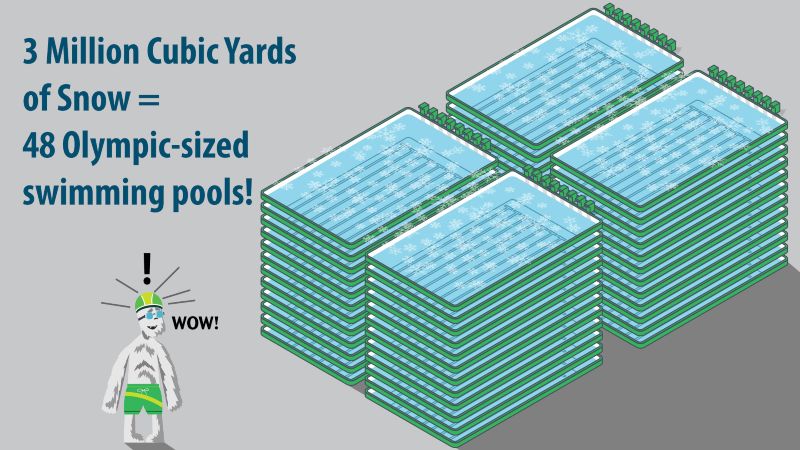
Fact 3: Snowplows, birds, and military jets have one thing in common
The most efficient formation for flying birds and flying jets is that familiar V formation that helps them travel for long distances without getting tired. Similarly, the best way to clear airport runways quickly is the flying V configuration where 20 snow vehicles work together to clear the most snow in the shortest amount of time to get planes back in service. Here’s what it takes:
- One lead vehicle in front with the team leader
- Four plows on the left side plus four plows on the right side
- Eight rotary brooms behind each plow on both sides
- Two de-icer trucks
- Followed by one rotary plow
- See the plows in action in this Checking In video on YouTube.
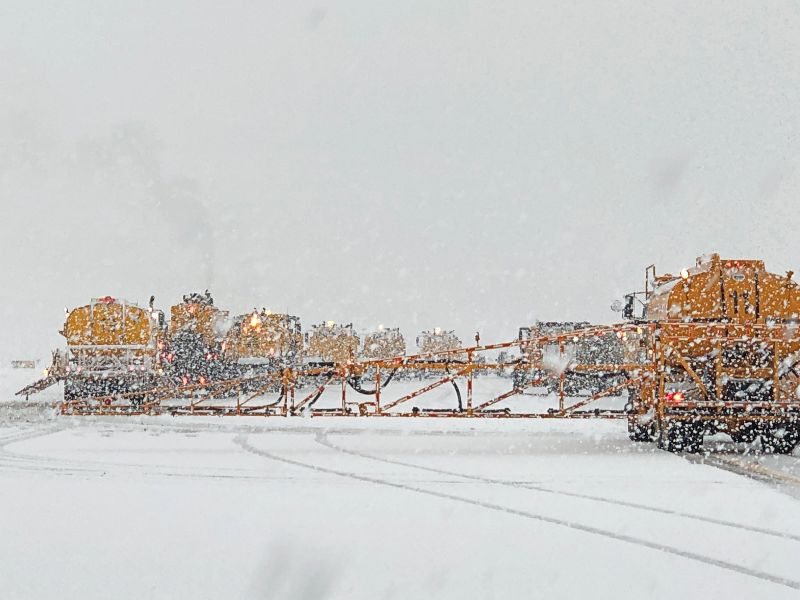
Fact 4: Seattle-Tacoma International Airport was the first airport in the country to receive approval in 1990 from the U.S. Federal Aviation Administration (FAA) to operate flights in low visibility and fog conditions
- SEA operates what’s called a Category IIIb (say Cat – 3 – b) Instrument Landing System. This is a precision approach and landing system that allows aircraft to land in visibilities as low as 50 feet high and runway visual range of less than 700 feet. Airlines, however, may have policies that won’t allow them to go down that far, so it's possible airport equipment will allow it, but the airline will not. Again, all for safety!
- Ever wonder how it’s done? Watch a video (in English) from the French Air Navigation Service about the final approach to an airport using the Instrument Landing System
- Just like the postal service, we’re used to operating in wind, slow, sleet, and hail. And don’t forget forest fire smoke. And rain.
- Watch a Facebook video about how SEA operates in low visibility operations like snow, smoke, and fog
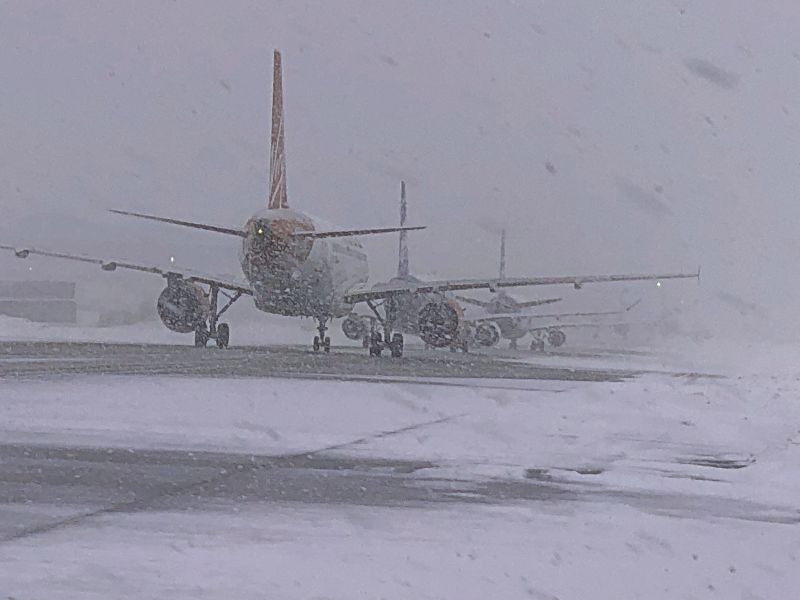
Fact 5: There’s a dedicated weather station at the airport
The National Weather Service (NWS)/National Oceanic and Atmospheric Administration (NOAA) has been measuring the official Seattle weather from a temperature gauge between the center and eastern runways since 1945. SEA weather measurements represent the longest continuous source of weather data; combined with an earlier source, NWS has continuous weather records all the way back to 1894. That’s a lot of rain. For weather geeks who want to know more:
- Boeing Field has continuous weather data going back to only 1998
- The temperature sensors are calibrated every 90 days
- This weather station accurately reflects the weather at the airport. Due to the varied topography and microclimates in our area, temperatures in the rest of the region can fluctuate 10-20 degrees from this reading
- Current weather conditions at SEA Airport from NOAA
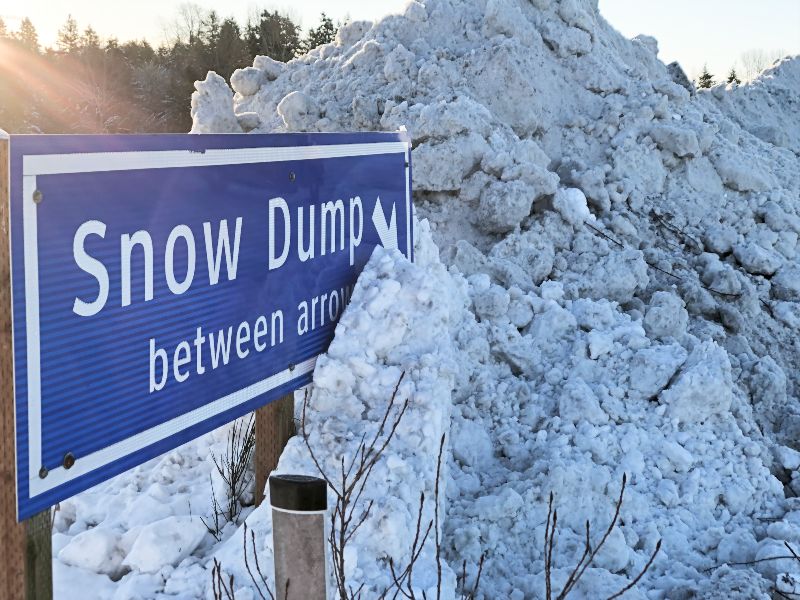
For more information on how SEA gets ready for winter, read Airport Winter Weather 101. And watch this space for answers to your frequently asked questions about winter weather.

